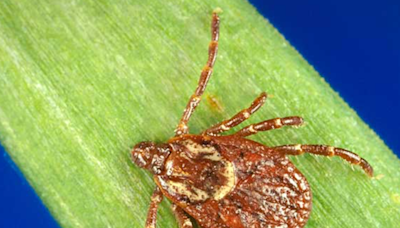Search results
What is Lyme disease? Lyme disease is caused by the spirochete (type of bacterium), Borrelia burgdorferi. It is transmitted to dogs through the bite of an infected tick. Once in the bloodstream, the Lyme disease organism is carried to many parts of the body and is likely to localize in joints or kidneys.
Many dogs exposed to Lyme disease have no symptoms, but a smaller percentage develop disease signs and complications, including joint inflammation, lameness, fever, lethargy, and swollen lymph nodes. If this acute stage is mild and goes undetected, chronic disease can develop and cause life-threatening kidney failure.
In highly endemic regions, more than 70% of local adult blacklegged ticks carry B. burgdorferi, posing a significant risk to both canine and public health. This article discusses the basic epidemiology, clinical presentation, diagnosis, treatment, and prevention of Lyme disease in dogs in the United States.
What are the signs of Lyme disease in dogs? Most dogs infected with Borellia bacteria will appear healthy, with no signs at all. This is different from infected people, about 90% of whom will become ill. In dogs that do become ill, signs of Lyme disease typically first show up 2-5 months after the dogs were first infected.
Apr 14, 2023 · The recommended treatment for Lyme borreliosis in dogs is a 4-week course of doxycycline. Polyarthritis resulting from Lyme borreliosis is expected to respond rapidly to treatment with doxycycline; if rapid improvement is not noted, other causes of polyarthropathy should be considered.
The most common signs of Lyme disease include: Fever Lameness Lethargy Decreased appetite Joint swelling and pain Swollen lymph nodes A less common but serious complication associated with Lyme disease causes kidney damage (Lyme nephritis). This may be more likely in young-to-middle aged Retrievers.
Dec 6, 2003 · Lyme Disease in Dogs. Wendy Brooks, DVM, DABVP. Revised: April 21, 2022. Published: December 06, 2003. See the article summary below . This spirochete is the agent of Lyme disease. Photo by CDC. Ixodes scapularis is the main carrier of the Borrelia burgdorferi. Photo by USDA.

